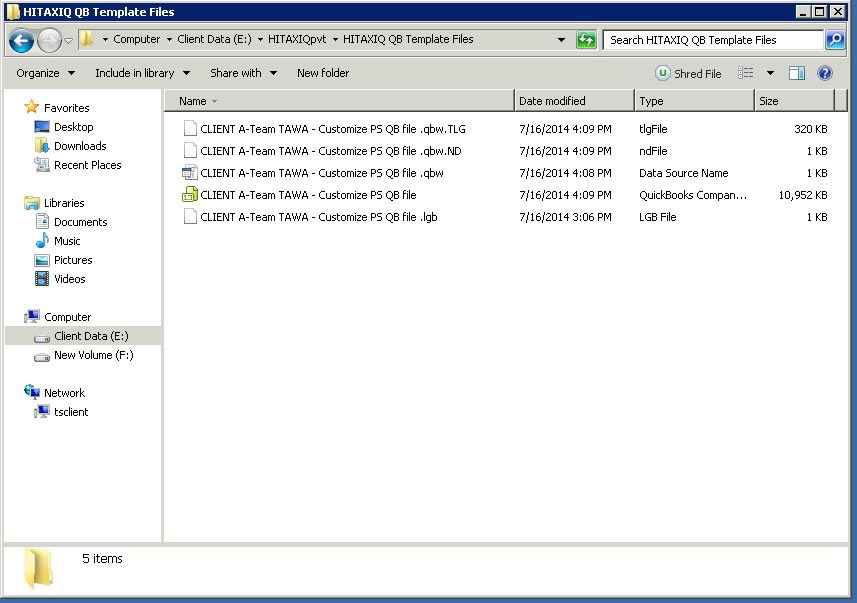Welcome to AskforAccounting company, a QuickBooks Service provider. We offer QuickBooks accounting services such as data conversion, data recovery, password recovery, rebuilding data, verification, condensing data, error resolution, and many more. We’ve successfully helped clients with QuickBooks (Online and Desktop) over the last 5 years. In this blog, we’ll discuss the topic of recover QuickBooks .TLG file.
QuickBooks .TLG (transaction log) file recovery is an important process for safeguarding your financial data. The TLG file stores a log of all changes made to your QuickBooks company file. While it may not be directly visible in your day-to-day use of QuickBooks, it plays a crucial role in data restoration. The TLG file comes into play when your company file is damaged or accidentally deleted. In such situations it can be used alongside your latest backup to recover transactions entered since the backup. This ensures that you don’t lose essential financial data.
TLG recovery is a valuable feature serving as a safety net in case of data loss or corruption. Understanding how to utilize the TLG file can help you protect your financial records and maintain the integrity of your QuickBooks data.
What’s the Purpose of the .TLG File?
In your day-to-day use of QuickBooks, you might not pay much attention to the TLG file. It doesn’t have a visible role in your regular QuickBooks activities, and it doesn’t impact how you use the software. So, what’s the TLG file’s role, and why should you care?
The TLG file’s true value lies in data recovery. When your company file faces deletion or damage, the TLG file comes to the rescue. It works with your most recent backup to restore transactions made after that backup.

Let us understand with a simple example:
- You have an inventory item with 10 on hand.
- You create a backup of your company file.
- Later, you receive 20 more of that item.
- Your company file encounters an issue, but you have both the current TLG file and your backup.
- You restore the backup, bringing the on-hand quantity back to 10.
- The transaction log is applied to your restored backup, returning your on-hand quantity to 20.
Managing QuickBooks Backups and the TLG File
When it comes to handling backups and TLG files in QuickBooks, there’s a straightforward principle.
Whenever you create a backup using the QuickBooks backup feature from the File menu, it generates a file with a QBB extension and clears the TLG file. Since all the transactions are included in the backup, the TLG file becomes unnecessary. From that point on, the TLG file starts to accumulate new transactions.
However, it’s essential to note that not all backup files are created equal. QuickBooks will only delete the .TLG file if you manually back up with the verify option enabled. If you don’t select full verification, the TLG file won’t be cleared, and your QBB file won’t be compatible with that TLG file. Also, this manual backup must be initiated from the File menu; scheduled backups won’t serve this purpose.
It’s important to keep in mind that the .TLG file must correspond to your company file. You can’t use it to merge transactions from a different computer, like transferring QuickBooks data from your home laptop to your office workstation. If you copy a TLG file from your laptop to your office computer, QuickBooks will detect the discrepancy and reset the TLG file, causing the loss of all saved transactions in the log.
Recover QuickBooks .TLG File
If you accidentally deleted your QuickBooks data file to the recycle bin or mistakenly deleted the import file, you can easily recover QuickBooks .TLG file. It must be valid to replay the files or information of the TLG file into another backup.
Process of recovering the Transactions Log File (.TLG)
If you’re unable to identify the .TLG.adr and .QBW.adr files, you can enable file extensions by.
- Press Windows + E to open File Explorer.
- Select Organize and then choose Folder and Search options.
- Under the View tab, uncheck “Hide extensions for known file types,” then select Apply and OK.
Recover Lost Transactions with the use of .TLG file
To recover transactions using the .TLG file, follow these steps…
- Create a new folder on your Desktop and name it QBTest.
- Open the folder where your company file is saved, and look for the QuickBooksAutoDataRecovery folder.
- You can find the location of the company file by pressing F2 or Ctrl+1 on your keyboard, or check the No Company Open Window.
- In the QuickBooksAutoDataRecovery folder, search for the .TLG.adr and .QBW.adr files. These files have the same name as your company file.
- Copy the .TLG.adr and .QBW.adr files and paste them into the QBTest folder.
- In the QBTest folder, remove the .adr from the end of the file names, resulting in .qbw and .tlg files, and then open QuickBooks.
- Open the company file located in your QBTest folder. Use your account register to verify that all transactions are present.
- To ensure the data integrity of the recovered file, go to the top left, select File, then Utilities, and choose Verify Data.
- If this copy of the company file is in good condition, you can move the damaged company file to a different location and replace it with the copy from QBTest.
QuickBooks TLG File Size Issues
At some point, many businesses encounter challenges with their QuickBooks file size. It’s essential to understand when your file has become “too large” and how to address this issue. Defining “too large” in QuickBooks can be somewhat subjective. The size limit can be based on the actual file size in megabytes (MB) or the content within the file, such as the number of items. Your file may occupy minimal hard drive space yet still present limitations based on how you use QuickBooks.

- File Size: While there’s theoretically no defined size limit for QuickBooks files, in practice, you should be cautious when QuickBooks Pro and Premier files reach around 150MB, as they start to strain. QuickBooks Enterprise becomes less efficient at approximately 1GB. Beyond these bars, QuickBooks may slow down significantly, and the database could become more prone to corruption.
- Number of Items: QuickBooks imposes limits on the number of list items like classes, customers, jobs, and more. These limitations vary by item type and QuickBooks version, and they change from year to year. As a general guideline, if your total item count is under 10,000, you’re generally safe with QuickBooks Pro and Premier, while the threshold is 100,000 for QuickBooks Enterprise. Exceeding these limits requires a closer examination of individual item types.
Understanding these size and item limitations is crucial for maintaining the efficiency and integrity of your QuickBooks data.
Conclusion
In conclusion, recover QuickBooks .TLG files can be a valuable lifeline when you face data loss in your QuickBooks files. Understanding the role of the TLG file and how to utilize it for recovery is crucial. While this process can often help you restore lost transactions, it’s essential to approach it with care and consider professional assistance if needed. If you encounter any challenges during TLG recovery, don’t hesitate to reach out to our QuickBooks experts for guidance and support. Your financial data is worth safeguarding.
Frequently Asked Questions
What is the QuickBooks TLG file, and why is it important in recovery?
The QuickBooks TLG (Transaction Log) file is essential for data recovery. It maintains a record of all changes made to your company file. If your file is damaged or deleted, the TLG file, when used with the latest backup, helps recover transactions entered since the backup. This ensures you don’t lose important financial data.
How do I access the TLG file in QuickBooks?
To access the TLG file, navigate to the folder where your company file is stored. You should see a file with the same name as your company file but with a .tlg extension. This is the Transaction Log file, and it plays a key role in recovery processes.
When should I consider using the TLG file for recovery?
You should consider using the TLG file for recovery when your QuickBooks company file is damaged or deleted, and you need to retrieve transactions that occurred after your last backup. It acts as a safety net, ensuring that your most recent financial data is recoverable.
What precautions should I take when working with the TLG file for recovery?
When working with the TLG file, it’s crucial to create backups of both your company file and the TLG file before making any changes. Comparing reports before and after recovery can help you identify any discrepancies. Additionally, archive your backup separately to preserve historical data.
Is the TLG file effective for all types of data recovery in QuickBooks?
The TLG file is primarily effective for recovering transactions entered since your last backup. However, it may not be useful for all types of data recovery. For more extensive data restoration or addressing specific issues, you may need to explore other recovery methods or consult with experts.
Can I merge TLG files from different computers or locations?
No, you cannot merge TLG files from different computers or locations. QuickBooks recognizes that the TLG file and your company file must match. Attempting to merge QuickBooks files from multiple sources will result in QuickBooks resetting the TLG file, potentially leading to data loss.

